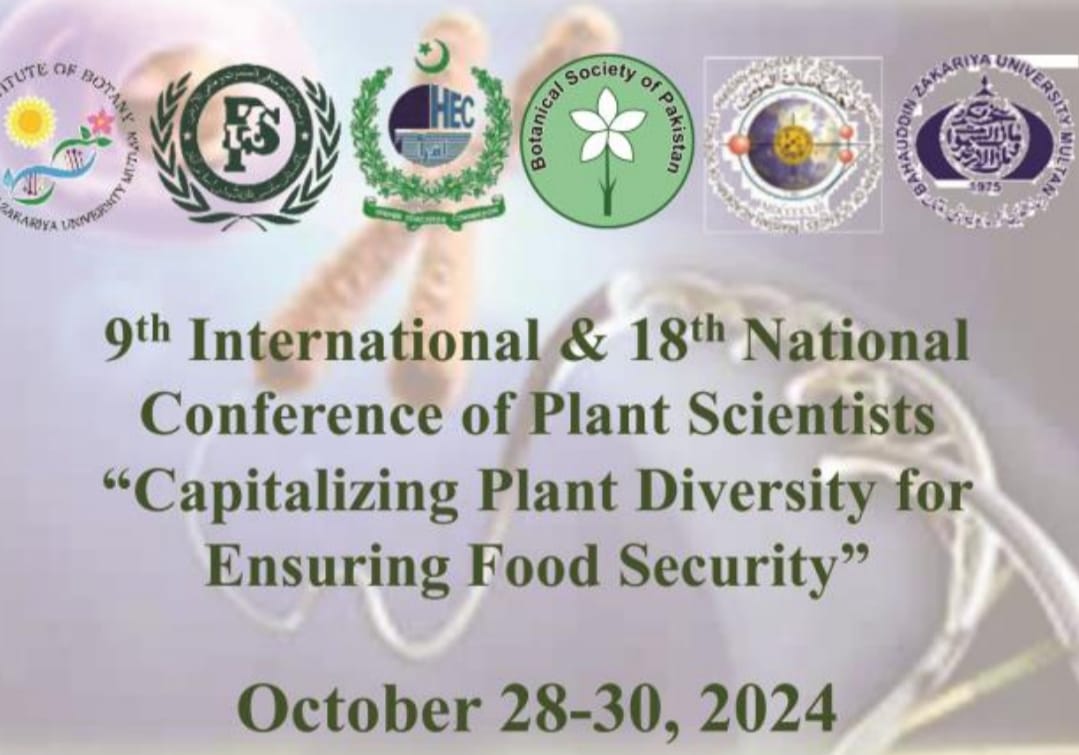
PJB-2025-347
GC-MS Analysis and in vivo/in vitro Biological Activities of Medicinally Important Cardaria chalepensis (L.)
Javeria Qureshi
Abstract
Medicinal plants are rich in secondary metabolites with many biological activities including antioxidant, anti-inflammatory, analgesic and antimicrobial agents. Cardaria chalepensis is a significant medicinal plant in the family of Brassicaceae used traditionally cancer, blood pressure and hypoglycemic effect. The current study was carried out to assess GC-MS analysis, Antioxidant, analgesic and anti-inflammatory activities of ethanolic extract of C. chalepensis. The bioactive compounds were identified by using gas chromatography-mass spectrometry (GC-MS) and comparing the mass spectra of the identified compounds with the database in the National Institute of Standards and Technology. The analgesic activity was tested by hot plate method and carrageenan induced paw oedema model was used for determining anti-inflammatory activity. While DPPH method was employed for investigating anti-oxidant activity. The ethanolic extract of C. chalepensis was subjected to GC-MS analysis, which revealed the presence of numerous bioactive substances at different retention times (minutes). These substances encompassed pharmacologically active compounds such as n-Hexadecanoic acid (1.98%) 1 9,12-Octadecadienoic acid (Z, Z) (6.94%), 2 Methyl 10-trans (6.94%), 12-cis-octadecad, 9-Octadecenoic acid (6.39%), 16-Methylheptadecanoic acid (2.35%), 2 Methyl stearate (2.35%), 9-Octadecenoic acid (4.44%), 2 Oleic Acid (4.44%), 1 Bis (2-ethylhexyl) phthalate (8.63%), 3 Phthalic acid (8.63%), di (2-propylpentyl, 1,2-Cyclohexanedicarboxylic acid (4.96 %), Ethane1,2-diiodo- (8.63%), 4-(7-Methyloctyl) phenol (1.74 %), 4-tert-Octylphenol (1.74%), Methyl Tris(trimethyl lsiloxy)silane (1.74%), 1,4-Benzenedicarboxylic acid (62.58%), 1,3-Benzenedicarboxylic acid (62.58%). The DPPH radical scavenging activity of ethanolic extracts of C. chalepensis increased with time and concentration. The significant antioxidant activity was shown by ethanolic extract (74.2±2.34 %) after 90 min at 300 µg/mL, but lower than the standard drug ascorbic acid (80.4±2.32 %). The low IC50 value (135.78) was obtained for ethanolic extract. The results of hot plate method revealed a significant analgesic effect (P<0.001) for all three doses after 90 minutes, compared to the negative control. The inhibition percentages for the ethanolic extract at 100mg, 200mg, and 300mg/kg were 64.04%, 65.20%, and 70.71% respectively, which closely resembled the positive control diclofenac sodium with an inhibition percentage of 77.94%. The anti-inflammatory activity of ethanolic extracts from C. chalepensis was found to be significant (p<0.001) at dosages of 100, 200, and 300mg/kg body weight. The highest inhibition of 59.33%, was observed at a dose of 300 mg/kg after 90 minutes. The study's results suggest that C. chalepensis has promising pharmacological properties. The proposed analysis provides a way to isolate the active compounds, which can aid in the development of new medications that have reduced side effects. The findings demonstrate that C. chalepensis has the potential to effectively treat various diseases.
To Cite this article:


